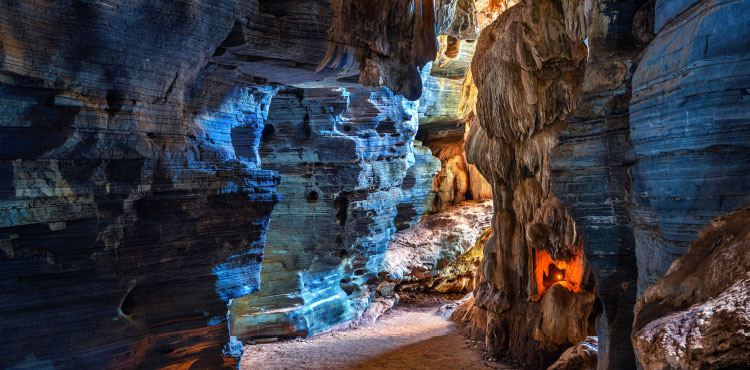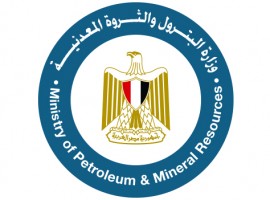Egypt is blessed with featured geological nature that has allowed it to have different compositions that host various minerals and petroleum resources. The geology of Egypt consists of three layers, according to report issued by University College London. Most of the surface of modern Egypt is covered by a layer of limestone; under this, lies a bed of sandstone. While this sandstone layer is the surface rock in Nubia and southern Upper Egypt. The oldest layer includes outcrops of metamorphic and igneous rocks. The Nile River passes through sandstones and limestones from Sudan to the North of Egypt. These sandstones and limestones are forming the sedimentary rocks from which oil and gas are produced.
Sedimentary Rocks: Main Petroleum Resource
Sedimentary rocks are formed from the accumulation of pre-existing rocks or pieces of organisms. Most of these rocks are characterized by porosity, which are suitable for petroleum formation. Sedimentary rocks consist of three types. Clastic sediments are one type which is formed from accumulation and lithification of mechanical weathering debris. United States Geology Survey Agency (USGS) elaborated that this phenomenon occurs when the pieces of rocks are loosened by weathering, then transported to some basin or depression where sediment is trapped.
If the sediment is buried deep, it becomes compacted and cemented, forming sedimentary rock. Clastic rocks classified according to their sizes or clast. The smallest grains are called clay, then silt, then sand. Grains larger than 2 millimeters are called pebbles. While shale is a rock made mostly of clay, siltstone is made up of silt-sized grains, sandstone is made of sand-sized clasts, and conglomerate is made of pebbles surrounded by a matrix of sand or mud. The porosity of this type often become excellent reservoirs for oil or natural gas.
Chemical sediments are another type which are formed by chemical and organic reprecipitation of the dissolved products of chemical weathering that are removed from the weathering site, according to Britannica website. There are two types of chemical rocks including allochemical and orthochemical rocks. Allochemical rocks consist of solid precipitated nondetrital fragments (allochems) that undergo a brief history of transport and abrasion prior to deposition as nonterrigenous clasts.
Limestone and cherts are examples of allocehmical rocks. Orthochemical rocks, on the other hand, consist of dissolved constituents that are directly precipitated as solid sedimentary rock and thus do not undergo transportation. These rocks include some limestones, bedded evaporite deposits of halite, gypsum, and anhydrite, and banded iron formations. The third type of sedimentary rocks are biological or organic rocks. This type is formed as a result of the accumulation of large numbers of living things. Organic rocks include chalk, coal, diatomite, dolomites and some limestones.
Egypt’s Oil-Producing Rocks
Geology of Egypt book stated that Egypt’s geological history is complex, with multiple phases of basin formation resulting in working petroleum systems from Paleozoic through Pliocene strata. According to Moqatel website, oil is produced from the Nubian sandstones, which sedimented during the middle and lower Cretaceous, Miocene and Carboniferous periods. The most oil-productive regions in Egypt are the Gulf of Suez, Western Desert and Nile Delta, where sandstones of high porosity and permeability are found. There are additional potentials in Red Sea, Upper Egypt and Western Desert.
The Gulf of Suez area has the most significant oil fields in Egypt as it includes the biggest petroleum reserves. Gulf of Suez fields produce from pre-rift Eocene through Paleozoic strata on large fault blocks and syn-rift Miocene strata on both structural highs and flank traps, according to the Geology of Egypt book. Western Desert basins have a mix of oil and gas, mostly in fault-related closures. By far the deepest basin is the Abu Gharadig, which has deep, untested traps below established Mid-Cretaceous reservoirs.
Consequently, the Nile Delta is a tertiary gas province and contains some of the largest fields in Egypt. Regarding Upper Egypt, it has established pays in Lower Cretaceous rifted sandstones of the poorly defined Kom Ombo Basin. The Red Sea has yet to be found productive, but good shows of recoverable oil types to Miocene source rocks have been tested by Amerada Hess Corporation.
Exploration History in Egypt
Gulf of Suez
It is one of the oldest hydrocarbon provinces in the world. A study entitled “Brief History of the Exploration History of the Gulf of Suez” reported that the first exploration success achieved there was in 1868. It was made by a French mining company digging for sulfur. Also, commercial oil well (Gemsa D-1) was discovered there by the Egyptian government in 1886. In 1908, another commercial oil was developed by Anglo Egypt company and the Egyptian Oil Trust with the establishment of Gemsa Field. By the end of 2020, the Gulf of Suez oil production reached 43.13 mmbbl and its natural gas production reached 33.02 bcf as well as 0.7 mmbbl of condensates, according to data from Egyptian General Petroleum Corporation (EGPC).
Nile Delta and Mediterranean
In 1967, the first gas field discovery (Abu Madi Field) was achieved in Nile Delta at the northeastern portion, according to Egyptian Natural Gas Holding company (EGAS). Then it is followed by the discovery of Abu Qir gas field offshore Mediterranean Sea in 1967. Then, the major Abu-Gharadig gas field was discovered in 1971 onshore in the North Western Desert of Egypt. EGPC data states that the total oil production from the Nile Delta in 2020, amounts to 0.05 mmbbl in 2020, while the natural gas production reached 260 bcf in addition to 2.85 mmbbl of condensates.
Moreover, the Offshore Mediterranean Deep Water was initially explored in 1975, EGAS reported. Starting from 1995, an intensive exploration campaign was started resulted in drilling 689 wells so far. The most significant achievement is the discovery of the Zohr field made by Eni in 2015. Mediterranean’s natural gas production reached 1,441 bcf while its condensates production reached 12.55 mmbbl in 2020, according to EGPC data.
Western Desert
In 1962, exploration activities commenced in the western desert. During the period from 1963 to 1973, companies of Amoco (currently BP), Phillips and General Petroleum Company (GPC) drilled more than 125 wells through which they discovered the Alamein oil field in 1966, Abu Gharadig oil field in 1969, and Umbarka Field in 1969; all of which produced from Lower and Middle Cretaceous reservoirs. EGPC data reveals that the total oil production in this region until 2020 reached 102.7 million barrels (mmbbl), while natural gas production amounts to 419 billion cubic feet (bcf) in addition to 13.06 mmbbl of condensates.
The geology of Egypt is compromised of the eras in which oil and gas rocks were formed. However, it can be noted that there is still a lot more that remains to be unexplored; the way to discover new resources would require efficient technological advancements and investment opportunities. This will push Egypt to discover its true overall potential.








